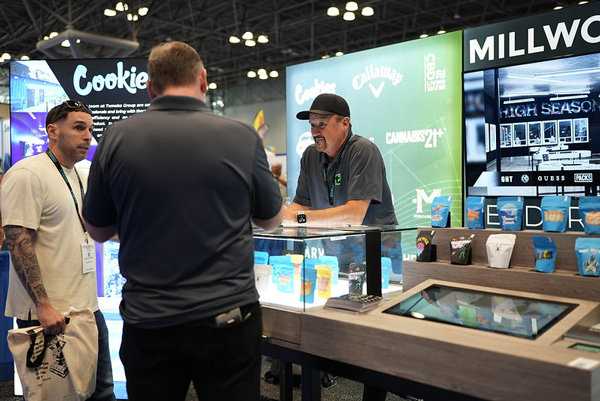Cannabis flower has become the top seller in the cannabis industry in legal markets throughout the U.S. Although the term “cannabis” has evolved to include a wide selection of products, flower has proven to have immense staying power. Whether purchasing flower in bulk or in ready-to-smoke pre-rolls, flower is a top product for consumers.
Cannabis flower: King of the industry
The dried, cured, and ready-to-use buds of the cannabis plant dominate the U.S. cannabis market, leading the way in sales volume in most legal markets.
According to Statista, U.S. cannabis flower sales are projected to grow to more than $15 billion by 2025, more than double the $7.2 billion flower sales grossed in 2021. (This figure is separate from cannabis pre-rolls, a category that achieved $1.5 billion in sales in 2022 on its own.) Data from cannabis analytics company Headset paints a similar picture of rapid growth, from $2.36 billion in sales in 2018 to $4.83 billion through October 2022.
At the same time, flower’s market share is declining as a wider variety of cannabis products, like edibles and concentrates, gain popularity among consumers. Headset reported a five point decline in flower’s market share from 2018 to 2022, from 45.7 percent to 40.7 percent. And yet, it remains the most popular cannabis product by far. Headset also reported that, as of 2022, edibles accounted for 11.8 percent of total U.S. cannabis sales. The third-largest category, concentrates, accounted for 8.3 percent.
Factors influencing the cannabis flower market
There are many factors influencing the growth of the cannabis flower market in the U.S., ranging from an expanding variety of cannabis products from breeders, to the launch of new legal markets, to price compression in maturing legal markets. Here’s a closer look at each of these factors and how they may impact cannabis flower sales in the coming years.
Cannabis product diversity
As the cannabis industry matures, a wider variety of product types are reaching dispensary shelves including concentrates, edibles, either, vape cartridges, tinctures, and topicals. Although cannabis flower remains the most popular among consumers in the U.S., these other product types offer alternatives. And as consumers in more markets become familiar with them, they’re increasingly choosing them in addition to flower.
Consumption product trends point to increased sales across flower and these other categories. The introduction of edibles, concentrates, topicals, and tinctures don’t preclude increasing sales of flower, as the data above shows. Expect consumers to continue to purchase flower even as they decide to incorporate other cannabis products into their routines.
New legal markets
Although flower’s market share may decline as new product types catch on, projections suggest that sales will increase. That’s especially true as new legal markets come online. For example, New York’s adult use cannabis market formally opened its doors in December 2022 and started seeing retail shops open in 2023. Grandview Research estimates that the New York adult use cannabis market alone will be worth more than $7 billion by 2025.
And that’s just one new legal market. New Jersey also recently began adult use cannabis sales in April 2022 and the market is similarly poised for growth. From April to December, adult use consumers in the state purchased $329 million worth of cannabis, and the market is estimated to be worth between $1.8 billion and $3 billion already.
As more states consider legalizing cannabis, the value of the U.S. market is only likely to increase. And, since cannabis flower typically holds a significant plurality of the market share in legal states, expect flower sales to increase as well.
Price compression
In many states, the price of cannabis flower is dropping, making it a more cost-effective option for consumers and contributing to profit margins for dispensaries. However, this also means the volume dispensaries need to sell to generate significant revenue has increased.
The average price per gram of flower fell across multiple state markets from 2020 through 2022, including in California, Colorado, and Michigan. Price compression occurs at varying rates in each state market based on supply and demand, and it’s especially volatile since each state must legally have self-contained supply chains.
In Michigan, for example, price compression was most dramatic during this period, with the price of flower falling from just under $14 per gram to nearly $4 per gram, according to Headset data. In California, the decline was less dramatic, with the price dipping from around $9 per gram to about $7 per gram.
Cannabis flower competitive landscape
The competitive landscape around cannabis flower is fragmented, including multi-state operators (MSO) with vertically integrated businesses that include cultivation as well as small, independent cultivators. These are examples of some of the biggest cannabis cultivators in North America, each with more than 1 million square feet of growing space.
- Ultra Health: Based in New Mexico, Ultra Health has 9,213,000 sq. ft. of space dedicated to cannabis production, including greenhouses, warehouses, and outdoors growing space.
- Mammoth Farms: Located in Colorado, Mammoth farms brings 3,484,800 sq. ft. of cannabis production to the U.S., including its greenhouses, outdoor grow, and warehouses.
- Hexo Corp: Hexo Corp is a Canadian cannabis producer, responsible for a 2 million sq. ft. greenhouse operation in Quebec.
- Copperstate Farms: Named after Arizona’s state nickname, Copperstate Farms maintains 1.7 million sq. ft. of greenhouses dedicated to the production of cannabis flower.
- Los Suenos Farms: The Colorado-based Los Suenos Farms operates 1,428,000 sq. ft. of both outdoor grow space and greenhouses.
- Canna Hub: Located in California, Canna Hub’s facilities total 1.2 million sq. ft. of greenhouses and warehousing space.
- Village Farms: Village Farms operates out of Canada and has 1.1 million sq. ft. of greenhouse space in British Columbia.
There are many other cultivators, of course, including small scale grows that serve their local markets. In many states, home grow is also legal, allowing consumers to grow their own plants for personal consumption. It’s also worth noting that not all of the cannabis cultivated by the producers above is sold as flower — much of it is used in manufacturing extracts to be sold as concentrates or used as ingredients in infused cannabis products.
Cannabis flower never goes out of style
Despite rampant innovation and consumers’ increasing familiarity with new types of cannabis products, cannabis flower remains a favorite. Expect flower to lead the way as the cannabis industry grows in the coming years. At the center of all the exciting new cannabis products and legal markets coming online is the plant itself, and flower offers consumers one of the closest connections that the plant has.






